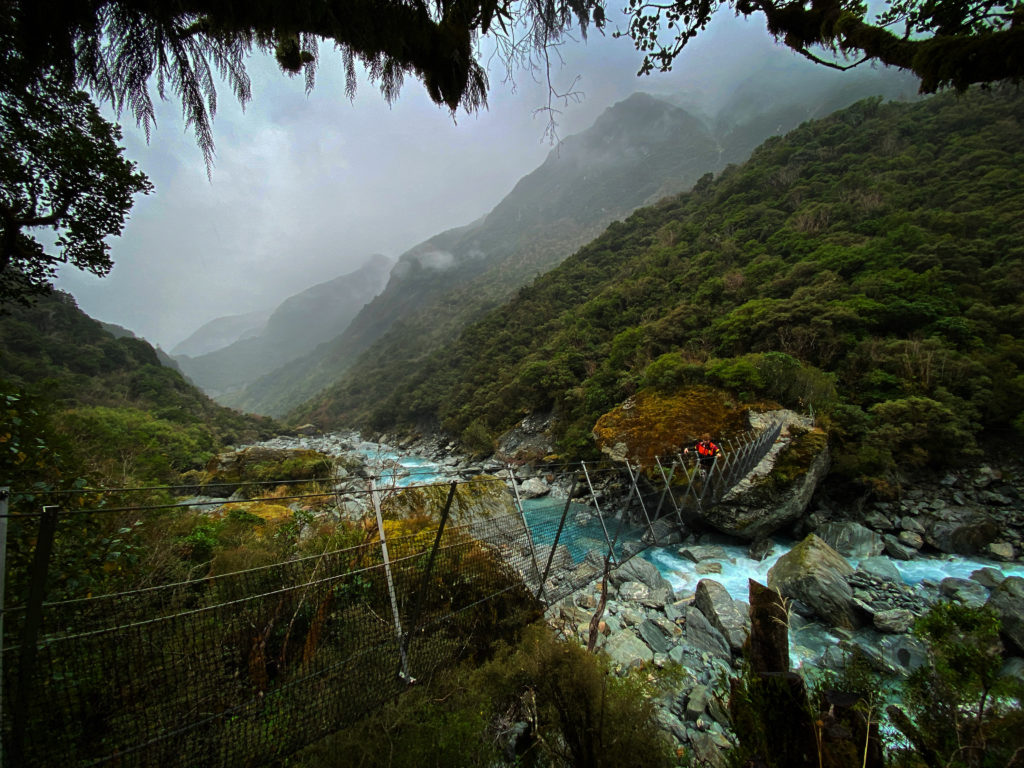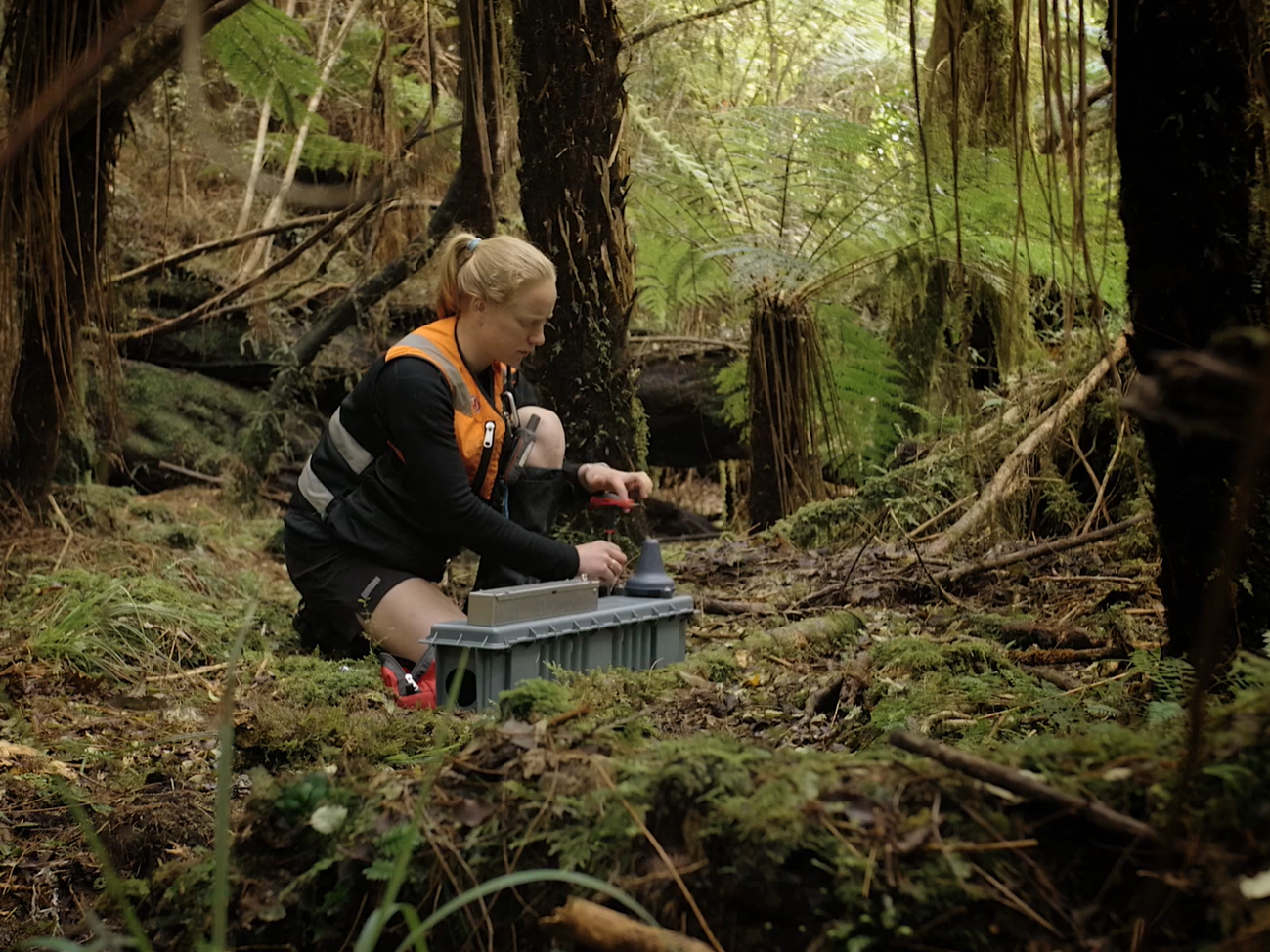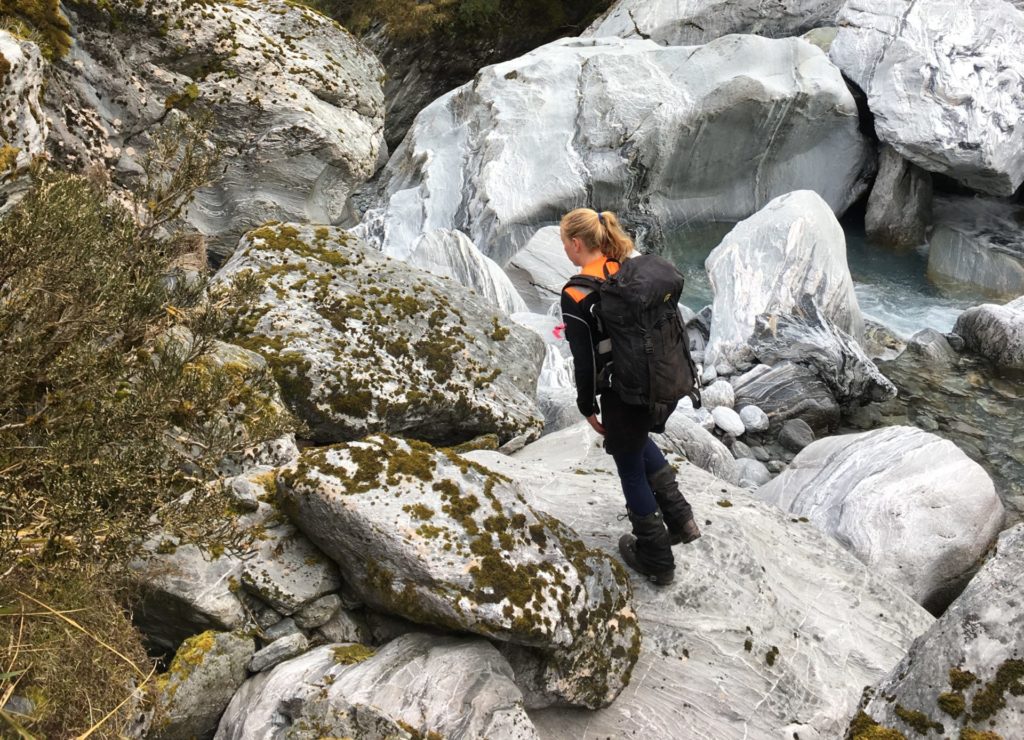We’ve nailed eliminating predators on offshore islands and fenced sanctuaries, but if we’re truly going to “get to zero” we have to crack how to do this everywhere else. With support from Predator Free 2050 Limited, Zero Invasive Predators (ZIP) is inventing and trialling some “pretty cool tools” to eliminate predators on the mainland.

On any day you can find ZIP researchers testing trap designs at their animal behaviour facility in Lincoln, field rangers checking traplines in the wild and rugged South Island landscapes, and team members pouring over data and designing the next tool.

This diverse team of passionate people constantly testing, refining, and improving innovations since 2015 has led to a seriously impressive cache of tools.
But, if Aotearoa is genuinely going to “get to zero” on predators, this is what it will take; many passionate people with diverse skill-sets – researchers, innovators and community organisers – making it happen.
ZIP Innovation Director Courtney Hamblin is one of them.
Hamblin started as a field ranger with ZIP in 2017 when the organisation was operating a 400ha field site in the Marlborough Sounds and beginning to think about the next scale of predator elimination.
“There are some pretty cool tools in the toolkit to eradicate [predators] on islands, and New Zealand has done an incredible job there,” says Courtney.
“The thing we haven’t really cracked is how do we do this on the mainland outside a fenced sanctuary?”After a few years of testing and refining the Marlborough Sounds approach, they decided to tackle 12,000ha in the Perth Valley in South Westland. The project worked: ZIP successfully removed – and kept out – stoats, rats and possums.
Flash forward to 2022, and ZIP is now leading the ambitious Predator Free South Westland project, working to eliminate predators from 100,000 ha within the next three years.
Levelling up with new funding
New funding from Predator Free 2050 Ltd means ZIP can innovate new tech like some of these sci-fi-sounding gadgets:
- SWARM satellite-based remote reporting system for traps and detection devices. Using satellite networks for reporting is helpful because many remote locations in the South Island backcountry don’t have any reception.
- Highly sensitive back-country detection camera with artificial intelligence (AI) and remote reporting. They can put these cameras in places that are hard to get to, and don’t need to trek back out there all the time to change SD cards – information is instantly received on the day of detection.
- Wildlife-friendly bait station for rodents and mustelids. These can hold pellet or block bait and are designed to be compatible with the ‘MotoLure’ automated lure dispenser. The team is currently in the early stages of trialling the use of toxic mayonnaise dispensed into these bait stations to reduce the labour required to service these devices significantly.
Additionally, the team has developed a groundbreaking trick, using toxin-laced rodents for targeted stoat responses.
“It’s basically a dead rodent laced with toxin – when we get repeat visits at a particular camera site by a stoat, we go and put a laced rodent there and the stoats take them,” ZIP Innovation Director Courtney Hamblin explains.
The tool’s power is two-fold – it’s highly targeted, so the non-target risk is low, and stoats are neophobic, having an extreme dislike of new or familiar things.
“So you can have this rodent out in the open, and it’s a food source they’re used to – they eat rodents all the time – it really helps break through that issue.”
Nature plays a significant role, too

During the Perth Valley project, ZIP honed their approach, which Courtney calls “Remove and Protect”, whereby rats, possums, and stoats are eliminated using toxins and trapping, and the land is protected using natural barriers like mountains and rivers, reinforced by detection devices and traps.
“One of the reasons we chose South Westland was because it was an easier place to protect – with the Southern Alps and the big glacier-fed rivers creating an excellent barrier to keep the predators out once they’re eliminated.” While most of the project area is alpine and bush, it includes farmland and townships.
While ZIP researchers are still learning how to get to zero in those new landscape contexts, it makes sense to use natural barriers, says Courtney.
ZIP is leading the way on another major project on the other side of the Southern Alps. Te Manahuna Aoraki Project, spanning 310,000 hectares, includes mountain ranges, dryland tussock, lakes, and braided river systems.
Field researchers will be using the natural features of the landscape to keep predators out while “learning on the job” the best tools and techniques to achieve elimination across the project area over the coming years.
Courtney says she has seen predator elimination succeed in her work and the places she loves to explore, which makes her hopeful for the future.
“A lot is happening in the world right now – there’s the biodiversity and climate crisis. We need a sense of urgency to find our way through these challenges,” says Courtney. In her view, a predator free New Zealand by 2050 is an essential part of Aotearoa New Zealand’s strategy to address these.

